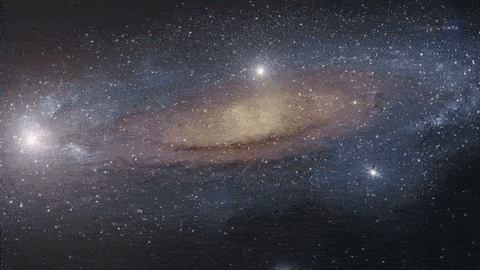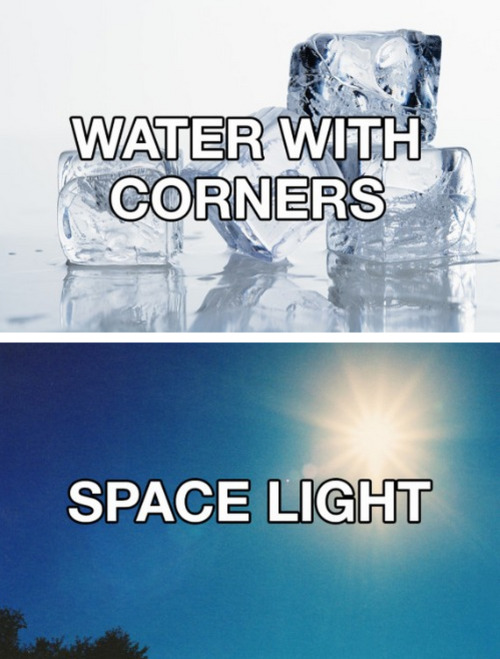Youaurendenial - Are You Supposed To Be Here?


More Posts from Youaurendenial and Others










Here’s an easy guide to remember some dog names.
Psychic: *reads my mind*
Me:

Psychic: what the fuck
Today we successfully tested one of our RS-25 engines, four of which will help power our Space Launch System (SLS) to deep space destinations, like Mars! This 500-second engine test concludes a summer of successful hot fire testing for flight controllers at our Stennis Space Center near Bay St. Louis, Mississippi.
The controller serves as the “brain” of the engine, communicating with SLS flight computers to ensure engines are performing at needed levels. The test marked another step toward the nation’s return to human deep-space exploration missions.
We launched a series of summer tests with a second flight controller unit hot fire at the end of May, then followed up with three additional tests. The flight controller tests are critical preparation for upcoming SLS flights to deep space– the uncrewed Exploration Mission-1 (EM-1), which will serve as the first flight for the new rocket carrying an uncrewed Orion spacecraft, and EM-2, which will transport a crew of astronauts aboard the Orion spacecraft.
Each SLS rocket is powered at launch by four RS-25 engines firing simultaneously and working in conjunction with a pair of solid rocket boosters. The engines generate a combined 2 million pounds of thrust at liftoff. With the boosters, total thrust at liftoff will exceed 8 million pounds!
Make sure to follow us on Tumblr for your regular dose of space: http://nasa.tumblr.com.

The Tale of Moth Ghost
Celebrating 10 Years of Revolutionary Solar Views
Twin spacecraft give humanity unprecedented views of the entire sun at one time, traveling to the far side of our home star over the course of a 10-year mission.

These two spacecraft are called STEREO, short for Solar and Terrestrial Relations Observatory. Launched on Oct. 25, 2006, and originally slated for a two-year mission, both spacecraft sent back data for nearly eight years, and STEREO-A still sends information and images from its point of view on the far side of the sun.

STEREO watches the sun from two completely new perspectives. It also provides information invaluable for understanding the sun and its impact on Earth, other worlds, and space itself – collectively known as space weather. On Earth, space weather can trigger things like the aurora and, in extreme cases, put a strain on power systems or damage high-flying satellites.
Because the rest of our sun-watching satellites orbit near our home planet, STEREO’s twin perspectives far from Earth give us a unique opportunity to look at solar events from all sides and understand them in three dimensions.

We use data from STEREO and other missions to understand the space environment throughout the solar system. This helps operators for missions in deep space prepare for the sudden bursts of particles and magnetic field that could pose a danger to their spacecraft.

STEREO has also helped us understand other objects in our solar system – like comets. Watching how a comet’s tail moves gives us clues about the constant stream of particles that flows out from the sun, called the solar wind.

STEREO is an essential piece of our heliophysics fleet, which includes 17 other missions. Together, these spacecraft shed new light on the sun and its interaction with space, Earth, and other worlds throughout the solar system.
To celebrate, we’re hosting a Facebook Live event on Wednesday, Oct. 26. Join us at noon ET on the NASA Sun Science Facebook page to learn more about STEREO and ask questions.
Learn more about how NASA studies the sun at: www.nasa.gov/stereo
Follow us on Tumblr for your regular dose of space: http://nasa.tumblr.com
autodacryphilia:










Polar Ring Galaxy NGC 660 in the constellation Pisces.
NASA
Phroyd
10 “Out of This World" Facts About the James Webb Space Telescope
Wouldn’t it be neat to see a period of the universe’s history that we’ve never seen before? That’s exactly what the James Webb Space Telescope (JWST) will be able to do…plus more!

Specifically, Webb will see the first objects that formed as the universe cooled down after the Big Bang. We don’t know exactly when the universe made the first stars and galaxies – or how for that matter. That is what we are building Webb to help answer.
Here are 10 awesome facts about this next generation space telescope:
1. The James Webb Space Telescope is the world’s largest and next premier space observatory. It will extend the discoveries of the Hubble Space telescope and observe the birthplaces of stars, galaxies, planets and life over billions of years.

2. It is named after James Webb, NASA’s second administrator and champion of our science.

3. At 3 stories high and the size of a tennis court, it will be 100 times more powerful than Hubble!

4. It is so big that it has to fold origami-style to fit in the rocket, which is only 5.4 meters wide…And then it will unfurl, segment by segment, once in space.

5. The telescope will observe infrared light with unprecedented sensitivity. It will see the first galaxies born after the Big Bang over 13.5 billion years ago.

6. Webb’s infrared cameras are so sensitive they must be shielded from light from the sun, Earth, and moon. The 5-layer sunshield is like having sunblock of SPF 1 million.

7. Webb will orbit the sun 1 million miles from Earth, where the telescope will operate at temperatures below -390 F (-235 C).

8. Webb’s mirrors are coated with a super thin layer of gold only about 1000 atoms thick to optimize their reflectivity in the infrared.

9. Webb will launch from French Guiana in 2018. It is launched near the equator because the faster spin of Earth there gives the rocket an extra push.

10. Webb is an international mission, with contributions from the European Space Agency and Canadian Space Agency. Once operational, scientists from all over the world will be able to use Webb to explore our solar system, planets outside our solar system, stars and galaxies.

Make sure to follow us on Tumblr for your regular dose of space: http://nasa.tumblr.com







my spidey sense is tellin me that ur a little bitch
-
 notlily2 liked this · 3 months ago
notlily2 liked this · 3 months ago -
 tetrachlorobenzene liked this · 3 months ago
tetrachlorobenzene liked this · 3 months ago -
 emily84 reblogged this · 3 months ago
emily84 reblogged this · 3 months ago -
 tinyballerinadancer1 liked this · 7 months ago
tinyballerinadancer1 liked this · 7 months ago -
 pepitaaaah reblogged this · 9 months ago
pepitaaaah reblogged this · 9 months ago -
 randomphases reblogged this · 9 months ago
randomphases reblogged this · 9 months ago -
 pyromuffin5 reblogged this · 9 months ago
pyromuffin5 reblogged this · 9 months ago -
 girlvamp liked this · 9 months ago
girlvamp liked this · 9 months ago -
 kitnightowl reblogged this · 9 months ago
kitnightowl reblogged this · 9 months ago -
 kitnightowl liked this · 9 months ago
kitnightowl liked this · 9 months ago -
 kimiko24 reblogged this · 9 months ago
kimiko24 reblogged this · 9 months ago -
 kimiko24 liked this · 9 months ago
kimiko24 liked this · 9 months ago -
 northern-nettle reblogged this · 9 months ago
northern-nettle reblogged this · 9 months ago -
 northern-nettle liked this · 9 months ago
northern-nettle liked this · 9 months ago -
 duwango reblogged this · 9 months ago
duwango reblogged this · 9 months ago -
 duwango liked this · 9 months ago
duwango liked this · 9 months ago -
 ramlamb3 liked this · 9 months ago
ramlamb3 liked this · 9 months ago -
 chaoticgoodhaberdasher reblogged this · 9 months ago
chaoticgoodhaberdasher reblogged this · 9 months ago -
 chaoticgoodhaberdasher liked this · 9 months ago
chaoticgoodhaberdasher liked this · 9 months ago -
 batoutofhelvetica reblogged this · 9 months ago
batoutofhelvetica reblogged this · 9 months ago -
 batoutofhelvetica liked this · 9 months ago
batoutofhelvetica liked this · 9 months ago -
 pandemneek reblogged this · 9 months ago
pandemneek reblogged this · 9 months ago -
 pyromuffin5 reblogged this · 9 months ago
pyromuffin5 reblogged this · 9 months ago -
 blackhipstergarbage liked this · 9 months ago
blackhipstergarbage liked this · 9 months ago -
 timekiller21 liked this · 9 months ago
timekiller21 liked this · 9 months ago -
 nightwalker900 liked this · 9 months ago
nightwalker900 liked this · 9 months ago -
 stick-arms reblogged this · 9 months ago
stick-arms reblogged this · 9 months ago -
 stick-arms liked this · 9 months ago
stick-arms liked this · 9 months ago -
 linkmasterx9 reblogged this · 9 months ago
linkmasterx9 reblogged this · 9 months ago -
 linkmasterx9 liked this · 9 months ago
linkmasterx9 liked this · 9 months ago -
 miraculousanarchy reblogged this · 9 months ago
miraculousanarchy reblogged this · 9 months ago -
 klaus-laserdisc reblogged this · 9 months ago
klaus-laserdisc reblogged this · 9 months ago -
 funsizelobotomy reblogged this · 9 months ago
funsizelobotomy reblogged this · 9 months ago -
 sparkly-heretic liked this · 9 months ago
sparkly-heretic liked this · 9 months ago -
 crowbone liked this · 9 months ago
crowbone liked this · 9 months ago -
 nmpositive reblogged this · 9 months ago
nmpositive reblogged this · 9 months ago -
 zedfunk liked this · 1 year ago
zedfunk liked this · 1 year ago -
 thiskillsthecrab liked this · 1 year ago
thiskillsthecrab liked this · 1 year ago -
 stratosfire reblogged this · 1 year ago
stratosfire reblogged this · 1 year ago -
 stratosfire liked this · 1 year ago
stratosfire liked this · 1 year ago -
 clownsplosion reblogged this · 1 year ago
clownsplosion reblogged this · 1 year ago -
 the-kennsterrrr liked this · 1 year ago
the-kennsterrrr liked this · 1 year ago -
 starrsilly liked this · 1 year ago
starrsilly liked this · 1 year ago -
 fiaggfjfshusky-1 liked this · 1 year ago
fiaggfjfshusky-1 liked this · 1 year ago -
 marinoele reblogged this · 1 year ago
marinoele reblogged this · 1 year ago -
 marinoele liked this · 1 year ago
marinoele liked this · 1 year ago -
 sweatycreature liked this · 1 year ago
sweatycreature liked this · 1 year ago -
 ultimmmmmp reblogged this · 1 year ago
ultimmmmmp reblogged this · 1 year ago -
 ultimmmmmp liked this · 1 year ago
ultimmmmmp liked this · 1 year ago
